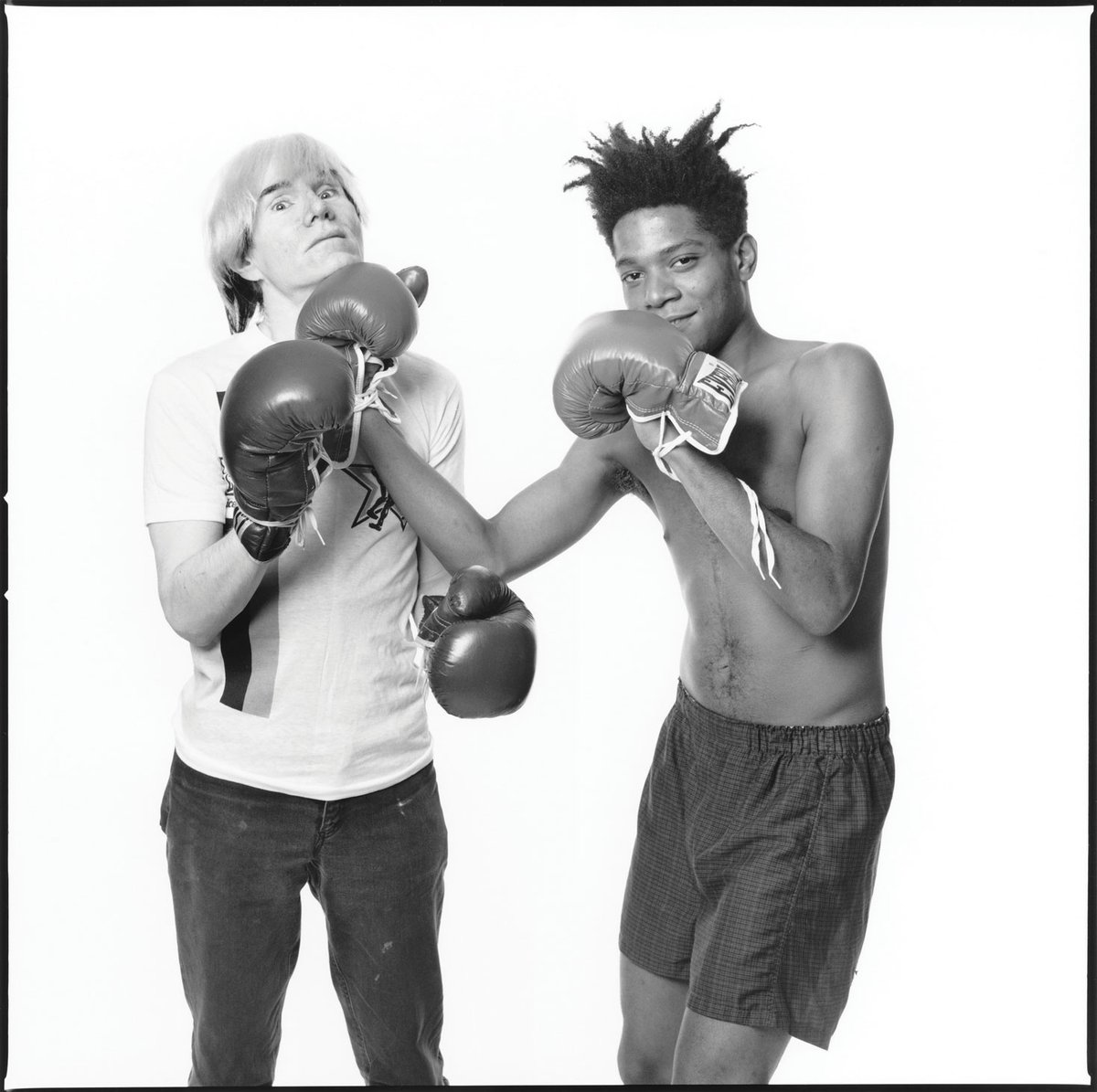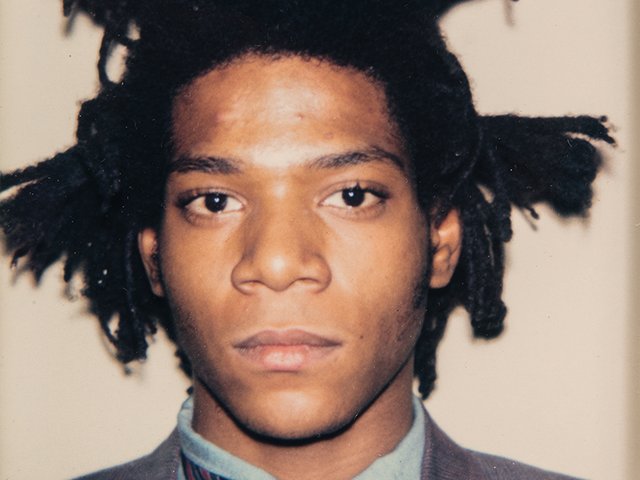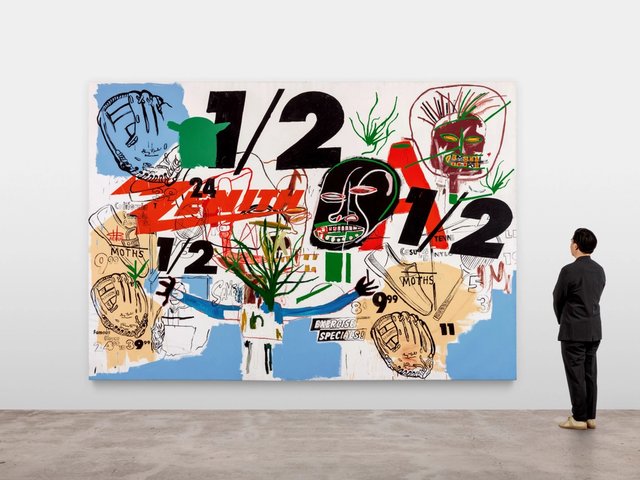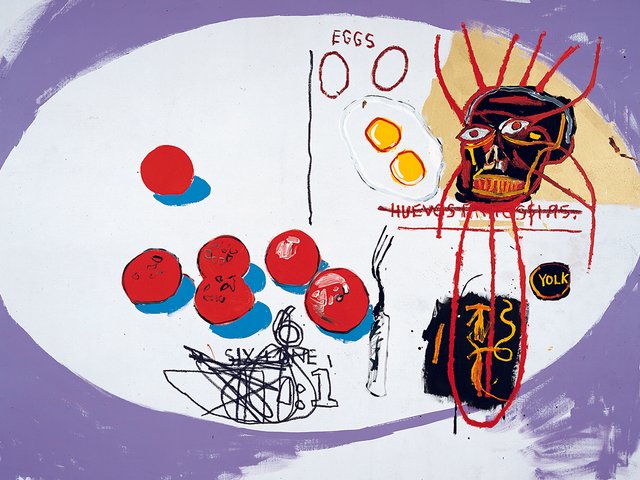Is there anything new to say about the mid-1980s collaboration between Andy Warhol and Jean-Michel Basquiat? Dieter Buchhart thinks so. The co-curator of the exhibition Basquiat x Warhol: Painting Four Hands at the Fondation Louis Vuitton in Paris says that research undertaken for the show reveals that the pair began collaborating earlier than previously thought.
Basquiat is thought to have first met Warhol in 1979 when the young artist tried to sell the Pop art master some of his postcards. The pair met more formally in 1982 when Bruno Bischofberger, the dealer representing both artists, took Basquiat to Warhol’s Factory studio in Manhattan for a photoshoot. The pair are thought to have created around 160 works together between 1983 and 1985, and the Paris show includes more than 80 paintings jointly created and signed by the two artists.
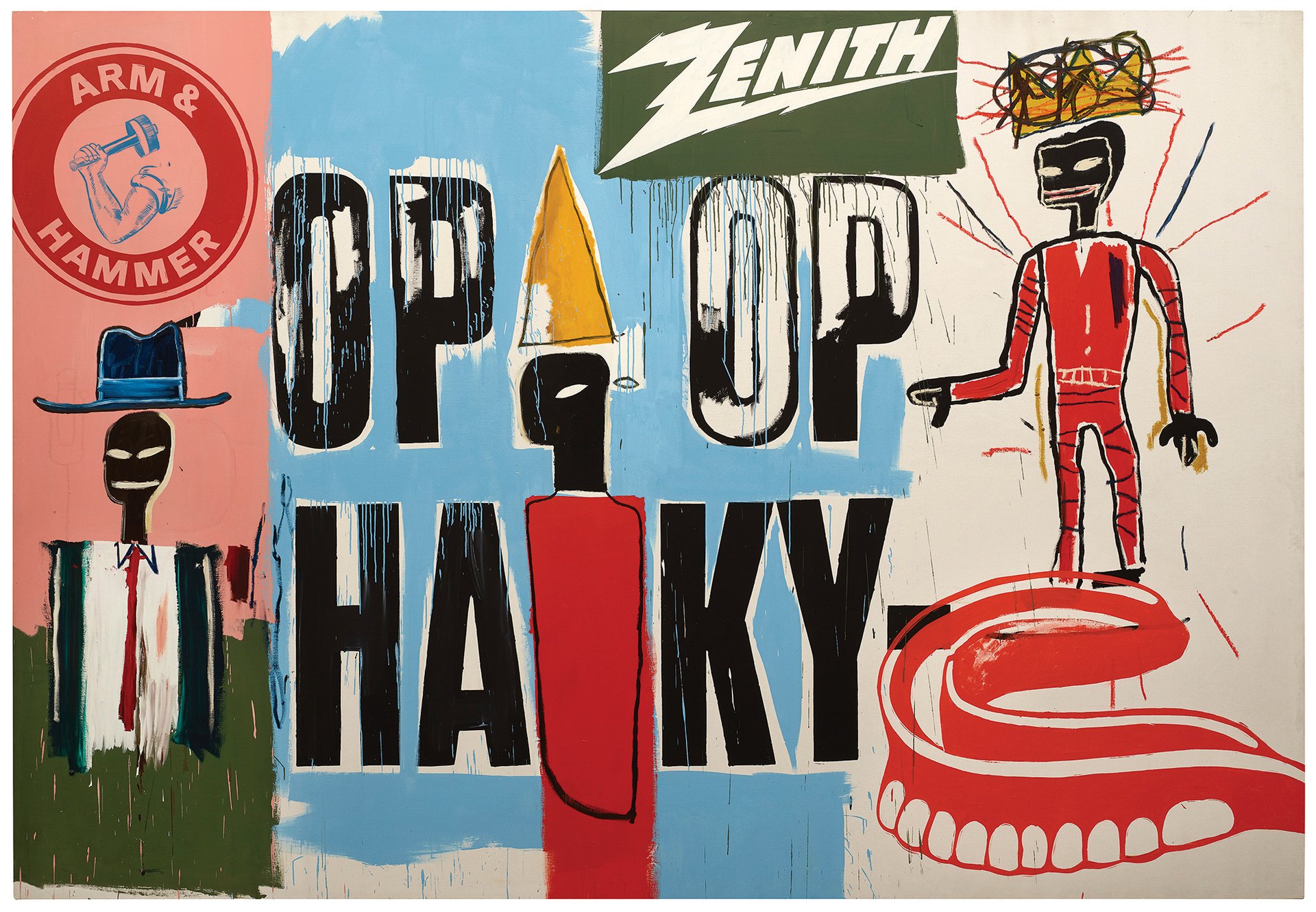
Jean-Michel Basquiat and Andy Warhol’s OP OP (1984-85) is one of more than 80 paintings on show in the exhibition at Fondation Louis Vuitton © Estate of Jean-Michel Basquiat. Licensed by Artestar, NY; © Andy Warhol Foundation for the Visual Arts, Inc/Licensed by ADAGP, Paris 2023. Courtesy Bischofberger Collection, Mannedorf-Zurich
In the autumn of 1983, Bischofberger proposed a collaboration between Basquiat, Warhol and the Italian artist Francesco Clemente. “During their collaboration, Basquiat began to modify small silkscreen paintings after Warhol encouraged him to do so,” Buchhart says. “In an interview for our catalogue, Jay Shriver, Warhol’s painting assistant since 1980, shared that he was present at the beginnings of this collaboration.” Warhol prompted Basquiat to paint on small silkscreens he had made, producing joint works that incorporated eggs, crabs, lobsters and dollar signs.
These early works have been dated 1984/85, which is inaccurate, Buchhart says. “They were either done at the end of 1983 or the beginning of 1984 and are strictly seen as modifications and not collaborations, as Basquiat reworked existing works even though Warhol invited him to do so.”
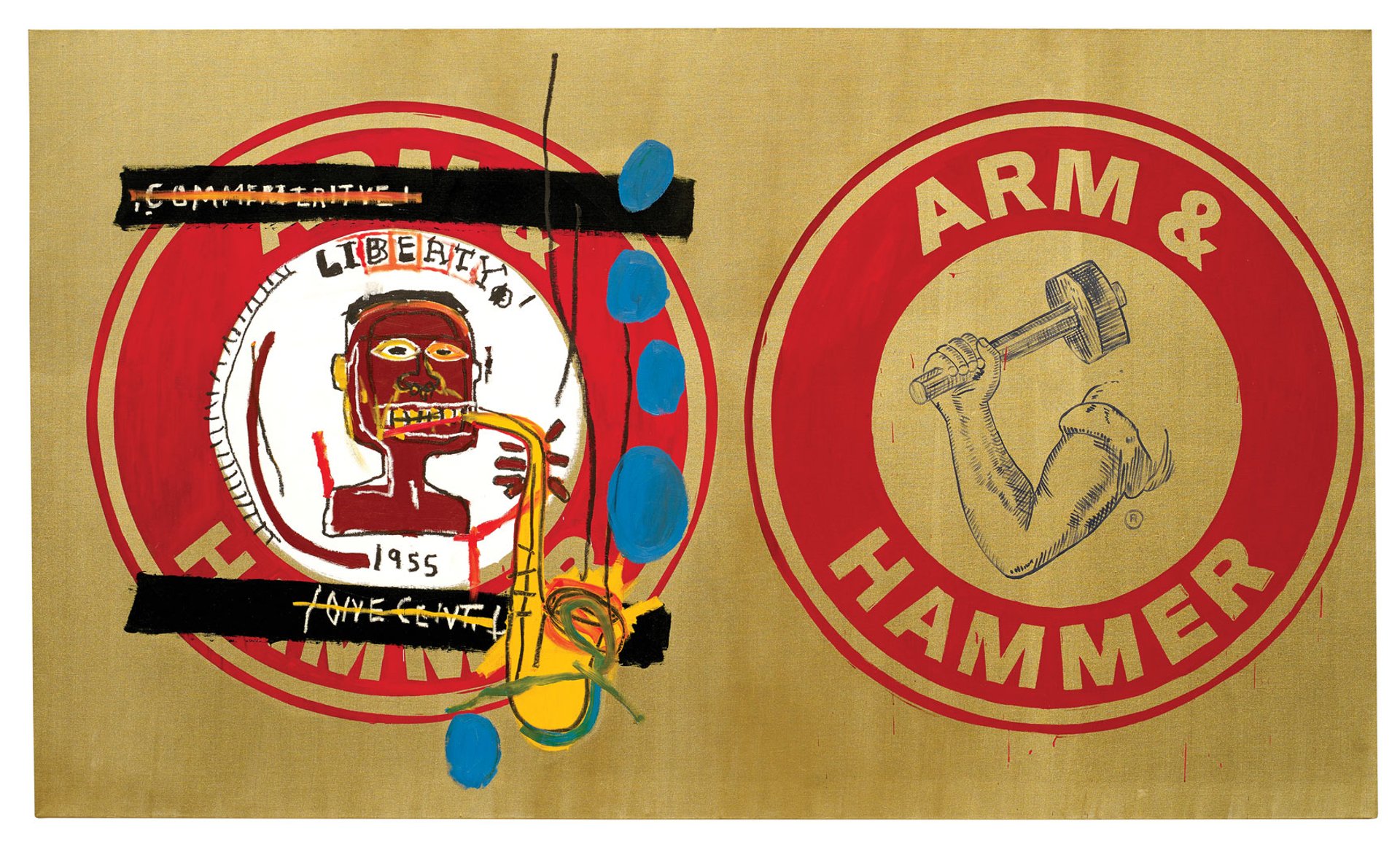
Jean-Michel Basquiat and Andy Warhol's Arm and Hammer II (1984-85) © The Estate of Jean-Michel Basquiat. Licensed by Artestar, New-York. © The Andy Warhol Foundation for the Visual Arts, Inc. / Licensed by ADAGP, Paris 2023
The exhibition also features “absolute masterpieces”, Buchhart says, such as Felix the Cat (1984-85) and Ten Punching Bags (Last Supper) (1985-86), which have not been exhibited before in a joint exhibition. On each punch bag, Warhol painted a portrait of Christ from a reproduction of Leonardo da Vinci’s The Last Supper. Over these, Basquiat repeatedly wrote the word “judge” and added his emblematic crown symbol.
“Today, art historians generally link this work to the aggressive and tragic atmosphere felt by an entire community and beyond at the time of the murder of the graffiti artist Michael Stewart, who was very close to Basquiat,” writes the co-curator Suzanne Pagé in the catalogue. “All of this was happening in the midst of the Aids crisis.”
Crucially, the work China Paramount (1984) reflects the different world views of both men. Warhol inserted profiles of the then US president Ronald Reagan, who pushed for a free market economy, into the painting. “Basquiat juxtaposes [the] Reagan heads with black skull faces, which in turn expose the utopia of progress and economic growth from which the African American population in particular still seemed to be excluded in the 1980s,” Buchhart says.
• Basquiat x Warhol: Paintings Four Hands, Fondation Louis Vuitton, Paris, 5 April-28 August


